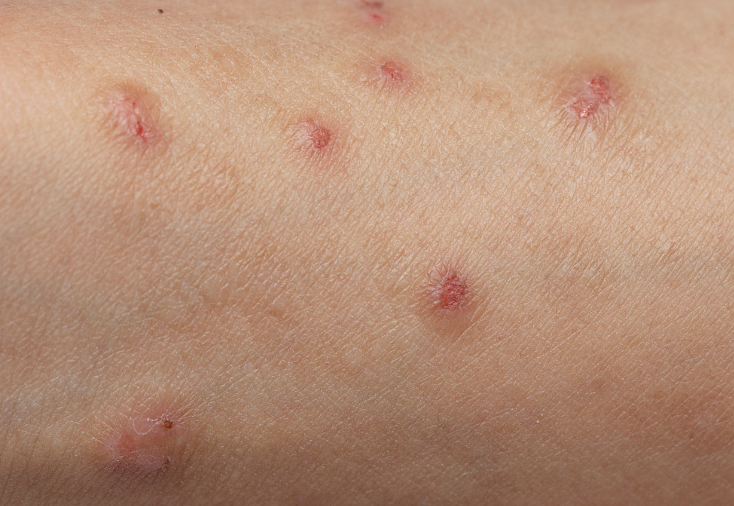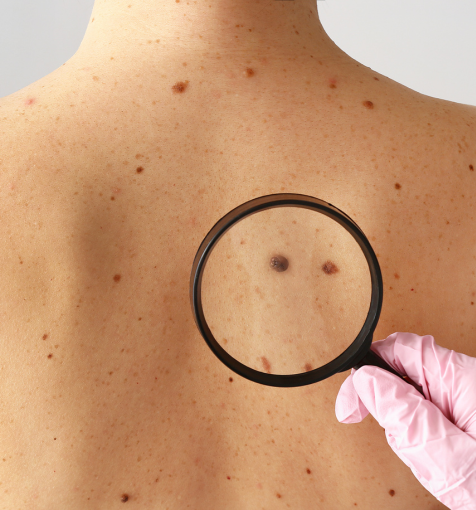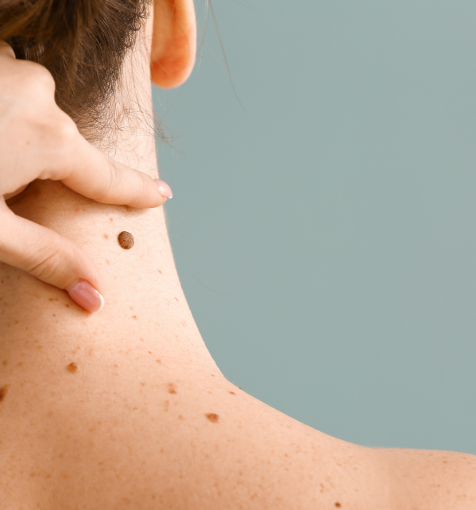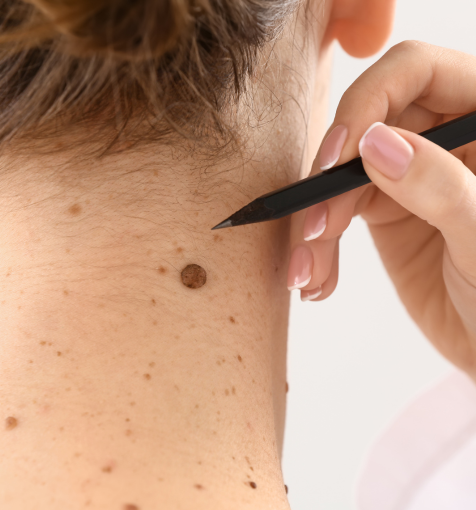Professional Evaluation and Monitoring of Moles in New Jersey
Almost everyone has moles, which are common skin growths that usually appear as brown or black lesions. Moles, also known as nevi, form when melanocyte cells—the cells responsible for producing pigment—grow in clusters instead of being evenly distributed throughout the skin. At Skin & Laser Center of NJ, we provide thorough mole evaluation, monitoring, and treatment to ensure your skin stays healthy and that any changes are promptly addressed.


Moles typically begin to appear in early childhood and continue to develop throughout the first 25 years of life. Over time, they may remain stable, gradually change in appearance, or even fade away. Some moles may:
Become slightly raised above the skin’s surface
Darken in color after sun exposure
Appear during times of hormonal changes, such as adolescence or pregnancy
Develop small hairs within the lesion
While most moles are harmless, changes in size, shape, or color can sometimes be a sign of skin cancer. That’s why understanding your moles and monitoring them over time is an important part of skin health.
The majority of moles are benign, but certain warning signs may indicate a need for professional evaluation. Dermatologists often recommend following the ABCDE rule when examining moles at home:
A – Asymmetry: One half of the mole does not match the other
B – Border: Edges appear irregular, blurred, or jagged
C – Color: Multiple shades or uneven pigmentation are present
D – Diameter: The mole is larger than 6mm (about the size of a pencil eraser)
E – Evolving: The mole is changing in size, shape, or color over time
If you notice any of these changes—or if a mole becomes itchy, painful, or begins to bleed—it’s important to schedule a professional skin exam right away.


At Skin & Laser Center of NJ, our dermatologists are experienced in identifying normal moles, atypical moles, and early signs of skin cancer. Our services include:
Comprehensive skin exams: Professional evaluation to identify suspicious or changing moles
Mole mapping and monitoring: Tracking changes over time for patients with multiple or atypical moles
Biopsies: Removing and testing suspicious moles to confirm whether cancer cells are present
Mole removal: Simple in-office procedures for moles that are concerning, bothersome, or cosmetically unwanted
Early detection and regular monitoring are key to ensuring moles remain harmless and to catching any potential concerns before they progress.
Learn More About Moles
There are many different types of moles, technically known as “nevi”:
Congenital nevi are present at birth, and occur in about one in 100 people. These are slightly more likely to develop into melanoma than those that appear after birth.
Intradermal nevi are usually soft, smooth, raised bumps and can develop at any time.
Junctional nevi develop over the course of a person’s life and are typically brown, tan, or black. They may be flat or slightly raised.
Dysplastic nevi are generally larger than average (larger than a pencil eraser), are irregular in shape, or have uneven color with dark brown centers and lighter edges. People who have 10 or more dysplastic nevi are 12 times more likely to develop melanoma on any part of their body—though not necessarily within these or other lesions.
Conducting regular self-examinations is the best way to detect early signs of skin cancer, including melanoma. Skin cancer is highly treatable when diagnosed early. Knowing what your moles and other marks on your skin look like now will allow you to recognize potential changes in these lesions in the future. Be sure to check your entire body including scalp and under your fingernails to be thorough. When examining your skin, you want to look for the warning signs that are the ABCDEs of melanoma:
Keep in mind that while any lesions or freckle should be checked if it has any characteristics of the ABCDEs, the Ugly Duckling rule is also important: If a mole stands out as different from all the lesions around it, it should be examined.
Any cancerous cells should be treated as soon as possible. There are numerous options available at Skin & Laser Center of NJ. Noncancerous moles may also be removed for cosmetic reasons. Talk to our team about the most effective treatment for you.
Convenient walk in hours available below. No appointment needed! Accepting private insurance and medicare. No medicaid plans.
Learn more about medical treatments at New Jersey’s Skin & Laser Center of NJ. Call 201-500-7525 or contact us online to schedule a consultation.